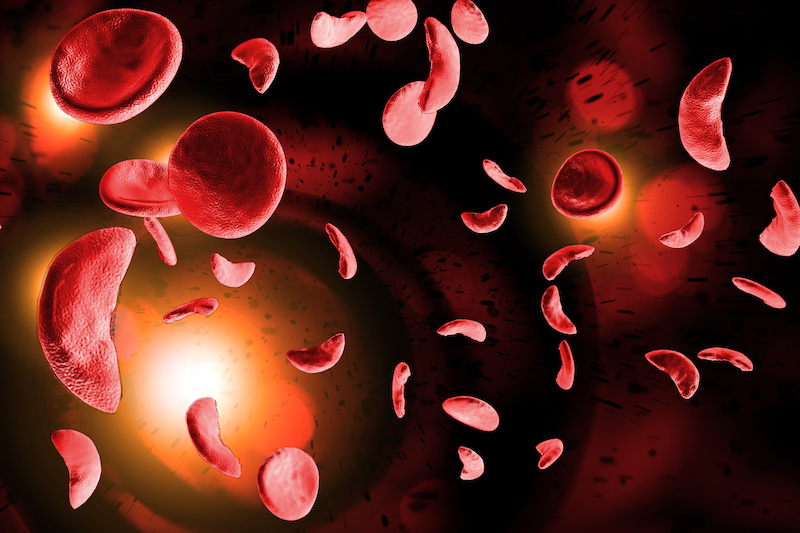
New Brunswick, N.J., September 1, 2022 – People who have sickle cell disease (SCD), a genetic disorder that affects red blood cells, have reduced life expectancy and may face many challenges in their life. However, there are steps they can take to live the healthiest life possible despite this disease. Archana Sharma, DO, Pediatric Hematologist/Oncologist at Rutgers Cancer Institute of New Jersey, the state’s leading cancer center and only NCI-designated Comprehensive Cancer Center together with RWJBarnabas Health, shares more.
Sickle cell disease is an inherited disorder of the red blood cells. It involves a defect in the hemoglobin protein which is found inside of the red blood cells. Hemoglobin is responsible for bringing oxygen from the lungs to the rest of the body. Normal red blood cells are shaped like a doughnut. They’re round and flexible which allows them to travel freely through the blood vessels. In patients with sickle cell disease, the red blood cells are rigid and shaped like a sickle or banana which prevents free travel through the blood vessels, instead there is a tendency for the red blood cells to clump together and get stuck. This blockage prevents oxygen from getting to where it needs to go which can lead to episodes of severe pain and tissue and organ damage.
Because sickle cell disease is a chronic lifelong condition, patients and families may face many physical and psychosocial challenges throughout their lives. Depending on the severity of the disease, these challenges could include frequent disruptions in their daily lives. Some patients find it difficult to maintain a full time job or to attend school on a regular basis. These patients are at a high risk for stroke and other cardiac and pulmonary problems as well as being high risk for infection. There is also the very real challenge that comes with learning to live with the stigma of having sickle cell disease, especially when it comes to pain management. Many people simply don’t understand the disease and the extent of the pain that is involved with it.
People with sickle cell disease can live, active full lives. While a person with sickle cell disease won’t have total control over how SCD affects their body, steps can be taken to manage pain. People with SCD can lower their chances of difficulties from the disease and enjoy many normal activities by getting regular checkups with their doctor and preventing infections by taking simple steps including frequent handwashing. It is also important to follow treatments prescribed by their doctor. Currently the only cure for sickle cell disease is a bone marrow transplant. However, there are effective therapies that can minimize symptoms and prolong life.
As the state’s primary referral site for sickle cell patients, Rutgers Cancer Institute as part of the Regional Comprehensive Sickle Cell Center at Robert Wood Johnson Medical School is able to treat both pediatric and adult patients using well proven therapies and cutting-edge clinical trial. Read more information on Sickle Cell Disease.
###
For journalists – contact:
Krista Didzbalis
Media Relations Assistant
732-507-8307
krista.didzbalis@rutgers.edu
For patient appointments/inquiries – contact:
844-CANCERNJ (844-226-2376)

